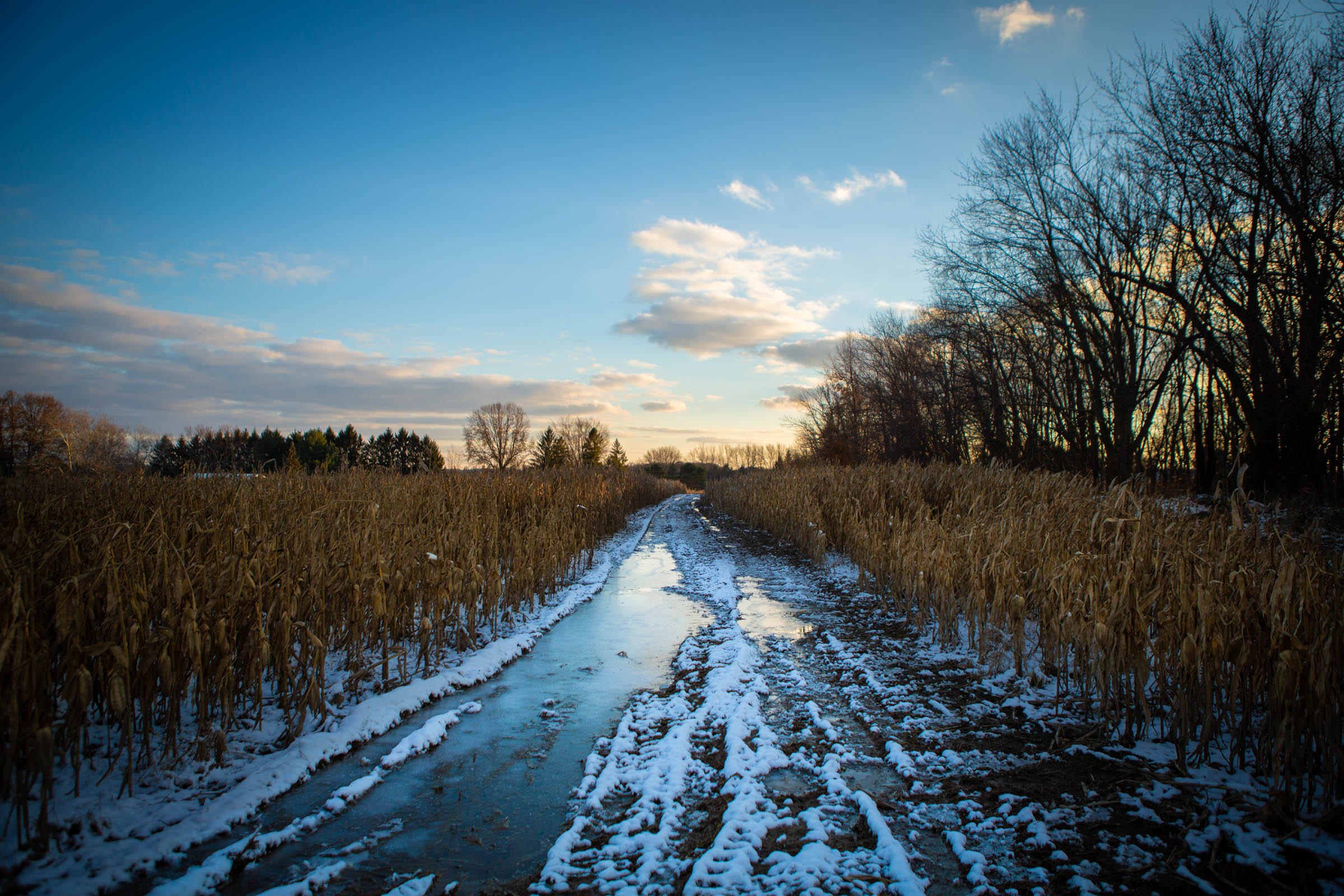Winter Landscape Photography
As of writing this we are still 11 days away from the official start to the winter season. But let’s be honest, once the snow starts to gather on the ground we can call it winter for all express purposes. For me, this is a great thing – I love winter landscapes. I love those big billowy, soft, snow draped trees; those massive, pristine snow drifts – ah, so gorgeous. I also like, by contrast, the more dirty, gritty urban snow-scapes. The muddy, frozen over puddles. The old barns, draped with half melted snow, abandoned for warmer locations. After-all, one of winter’s most evocative moods, for me, is that sense of the forgotten, and left-behind. It’s that amazing feeling of loneliness that captivates me.
Finding locations for these lonesome photos is the easy part. If you live in urban and city areas, just go seek out the quiet alley-ways and evening streets. If you live in a more rural area, find an old farm and barn that’s isolated. Sunset/Sunrise and the blue hours are your best bets. Morning or night just depends on your preference. If it has snowed over the evening, then your morning shots will have a more untouched look to them. In those cases it may be better to wait till evening to get that more worn-in look as the day takes it’s toll. Of course, if it’s going to warm up too much over the day then the morning might offer the best opportunities before the snow melts too much.
What to look for
Like I said, finding the landscape is the easy part. The harder part if finding the mood. Much of that is crafted by the light – that is why I suggest golden and blue hours. Composition is important too. Because of my decades as creative director I can’t help but think and visualize in metaphors and feelings. I don’t look for compositions that read like, “Red-barn on a white field”, or “rule-of-thirds”, or whatever else you normally read about concerning what makes a good photograph. Instead, I look for compositions that speak to me in terms like, isolation, alone, opportunity, hope, strength, leadership, melancholy, etc. I do this because if I can craft a photo that captures the feeling and metaphor in my mind, I know my picture will do a better job conveying that emotion to the viewer.
So, in practice, if you’re out in the field and you see two possible photos: Maybe one is a more classical rule-of-thirds arrangement of your subject against the background. and your second presents a different composition but also conjures memories of a time where you felt cold, and alone, or whatever, then I would strongly suggest exploring that second option first. You can always take the tried and true compositionally correct photo once you’re done, but that second photo which elicits emotion will probably be the photo that resonates with your audience.
I’ll be honest, photos like these have a lot more to do with how you think creatively, and much less to do with all of the “rules” you’ve ever learned about photography. To bring emotion into your photos means you have to learn to recognize your own feelings in that moment and know how to capture them for other’s to see. My best advice is just to be open to what you are feeling when you are on location. If you’re feeling uninspired or nothing at all it just means you need to move around a bit and reorient yourself until you begin to feel that flicker run through your chest and down your arms, spine and legs.
Now, put on some warm clothes, grab your camera and prepare to to brave the cold this winter and express yourself through photography!

